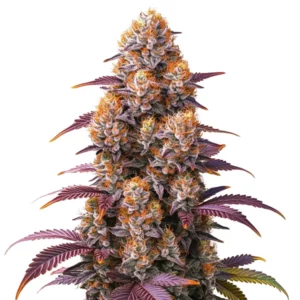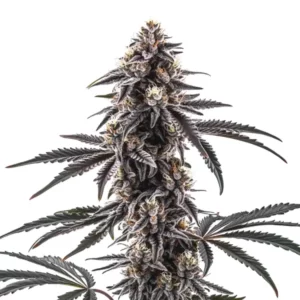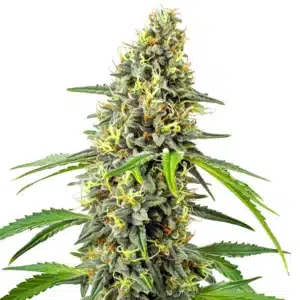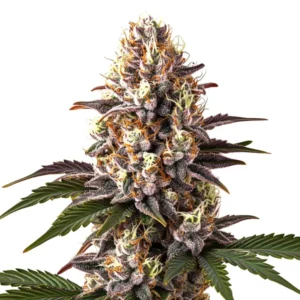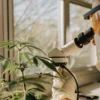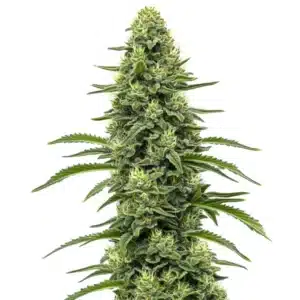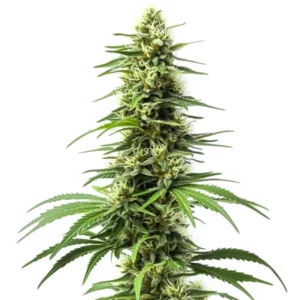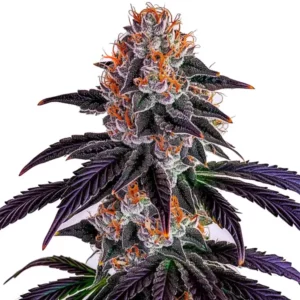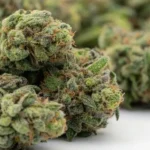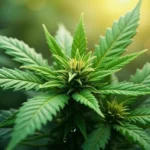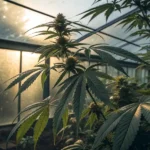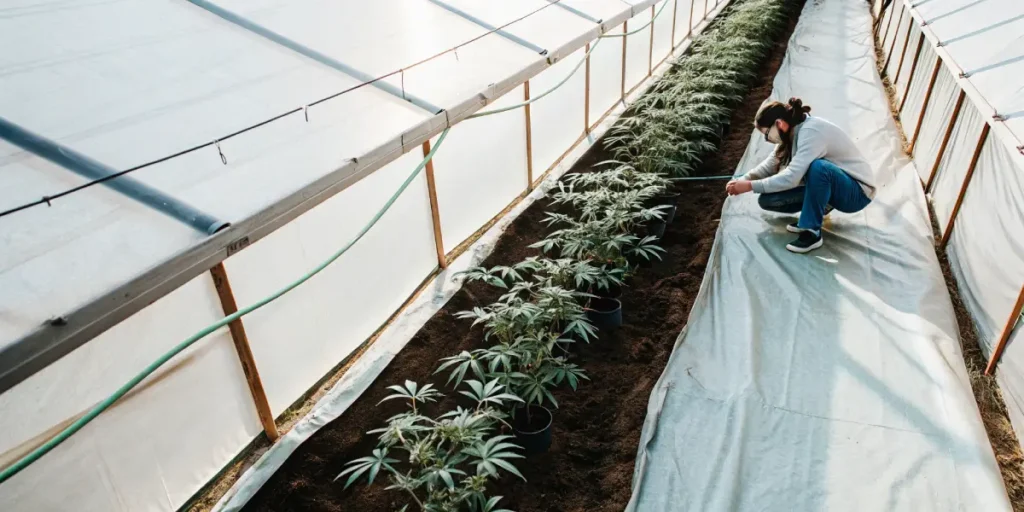
Measuring ROS Levels in Cannabis Plants
Reactive Oxygen Species (ROS) can have a significant impact on cannabis plant health. When these molecules accumulate excessively, they can cause oxidative stress, which might lead to cell damage and affect plant growth. Measuring ROS levels in cannabis plants is essential to ensure they thrive, allowing growers to detect potential issues early and maintain optimal conditions for healthy development.
Various methods for measuring ROS in cannabis plants are available for growers, ranging from simple visual assessments to high-tech tools. By knowing these methods, you can effectively monitor your plants and take action to maintain their health. Let’s dive into the practical steps of detecting reactive oxygen species in cannabis cultivation.
Recommended Strains
Blue Dream
|
|
THC | 17% - 24% (Medium) |
|
|
Type | Feminized |
|
|
Yield | High |
|
|
Phenotype | 50% Indica / 50% Sativa |
GG4
|
|
THC | 27% (High) |
|
|
Type | Feminized |
|
|
Yield | High |
|
|
Phenotype | 40% Indica / 60% Sativa |
Consider trying strains like Blue Dream, known for its resilience and ability to withstand varying environmental conditions. This strain can serve as a good test subject when experimenting with ROS monitoring techniques.
Tools for Monitoring ROS Levels in Cannabis
Monitoring ROS levels doesn’t have to be complicated. Several tools can help assess oxidative stress in cannabis plants efficiently. You can use colorimetric assays, which involve changes in color to indicate ROS presence. These are straightforward and often require only basic lab equipment.
For more precise measurements, consider advanced tools like fluorometers. These devices detect specific wavelengths of light emitted by ROS, providing more detailed insights. Although they might seem intimidating at first, they offer valuable data for serious growers aiming to optimize plant health.
Electrochemical sensors also play a crucial role in monitoring ROS levels. These sensors provide real-time data, allowing growers to respond promptly to any changes. Their ability to offer continuous feedback makes them an invaluable asset in any cultivation setup. Such tools for monitoring ROS levels in cannabis are essential for maintaining a stable growing environment.
Integrating these tools into your routine can significantly enhance your knowing of your plants’ health. By combining multiple methods, you can cross-verify results, ensuring accuracy and reliability in your assessments. This comprehensive approach to measuring ROS levels in cannabis plants is key to successful cultivation.
- Colorimetric assays: Easy to use and affordable.
- Fluorometers: Provide detailed, accurate readings.
- Electrochemical sensors: Offer real-time monitoring.
Methods for Measuring ROS in Cannabis Plants
Several methods for measuring ROS in cannabis plants exist, each with its pros and cons. Simple visual assessments are a good starting point. Look for symptoms like leaf discoloration and wilting, which may indicate oxidative stress.
Another practical method involves using electrochemical sensors. These devices measure the electrical changes caused by ROS in plant tissues. They’re handy for growers who want continuous monitoring without much hassle.
Fluorescent dyes present another option. These dyes bind to ROS molecules and emit light, which can be measured using specialized equipment. While more technical, they provide accurate data, helping you tailor your approach to plant care.
Knowing these methods allows growers to choose the most suitable option for their needs and resources. Whether relying on visual cues or advanced technology, the goal remains the same: to detect reactive oxygen species in cannabis cultivation effectively. This knowledge empowers growers to maintain healthier plants and optimize yields.
Promos & Deals
Impact of ROS on Cannabis Plant Health
Excessive ROS levels can lead to various issues in cannabis plants. Oxidative stress affects photosynthesis, the process by which plants convert light into energy. As a result, plants may grow slower or produce lower yields.
In severe cases, high ROS levels can cause cell death, leading to stunted growth or even plant death. This makes it essential to regularly assess ROS levels, especially in high-stress environments, to ensure your plants remain healthy.
Beyond immediate growth concerns, the impact of ROS on cannabis plant health can extend to plant quality. Elevated ROS levels can affect cannabinoid and terpene profiles, potentially altering the plant’s potency and flavor. Therefore, consistent monitoring and management of ROS are crucial for maintaining both plant health and product quality.
Employing an oxidative stress assessment in cannabis plants as part of your regular cultivation routine can help identify early warning signs. By doing so, you can implement preventive measures, ensuring that your plants remain robust and productive throughout their lifecycle.
- Reduced photosynthesis efficiency.
- Slower growth rates.
- Potential cell death in extreme cases.
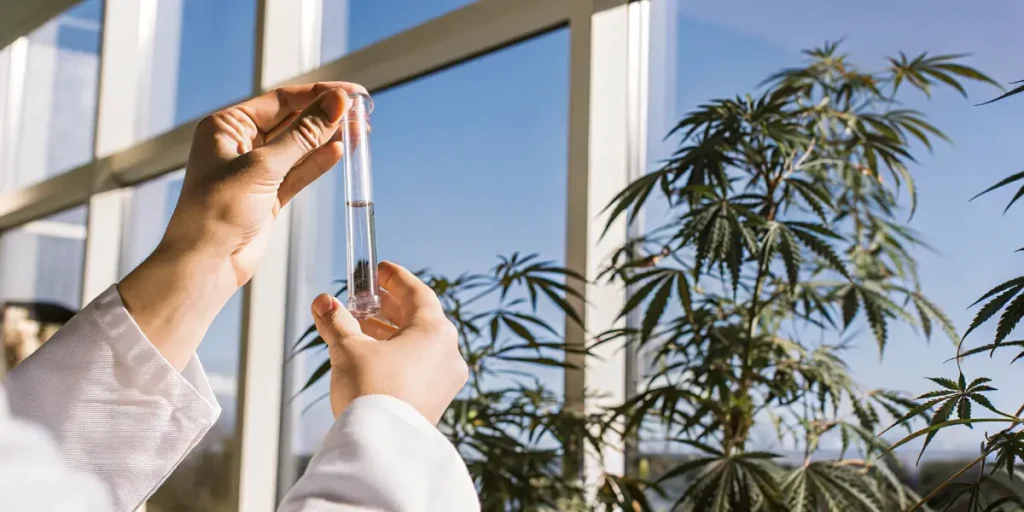
Oxidative Stress Assessment in Cannabis Plants
Assessing oxidative stress in cannabis plants involves a combination of observation and measurement. Begin by checking for visible signs like yellowing leaves and burned leaf tips. These symptoms often indicate high ROS levels.
Once you’ve identified potential oxidative stress, use one of the measurement methods discussed earlier. Establish a routine for regular checks, as this will help you catch issues before they become severe.
Regular oxidative stress assessment in cannabis plants can be enhanced by leveraging technology. Using digital imaging or thermal cameras can provide additional insights into plant stress levels, helping to pinpoint areas of concern more accurately. These tools complement traditional methods, offering a more comprehensive view of plant health.
By staying vigilant and proactive, you can maintain optimal growing conditions, preventing oxidative stress from taking hold. This approach not only preserves plant health but also maximizes potential yields, making it an essential practice for serious cultivators.
Consider cultivating Gorilla Glue 4 for its robust nature. It’s a great strain for experimenting with oxidative stress assessments due to its resilience against environmental stressors.
Practical Examples of Monitoring ROS in Cannabis Cultivation
Imagine growing Green Crack, a strain known for its energetic growth. You’ve noticed some leaves turning yellow, a potential sign of oxidative stress. By using a colorimetric assay, you confirm elevated ROS levels.
This early detection allows you to take corrective actions, like adjusting light exposure or nutrient levels, preventing further damage. Such proactive measures ensure your plants remain healthy and productive.
These practical examples highlight the importance of having an established routine for measuring ROS levels in cannabis plants. By integrating these practices into your daily cultivation tasks, you can develop a keen sense of your plants’ needs and respond swiftly to any signs of stress.
Furthermore, learning from these scenarios can improve your overall cultivation strategy. By refining your methods for measuring ROS in cannabis plants, you can enhance your skills and become more adept at maintaining a thriving grow environment.
- Identify symptoms early.
- Use appropriate measurement tools.
- Implement corrective actions promptly.
Methods to Reduce ROS Levels in Cannabis Plants
Once you’ve measured ROS levels, the next step is reducing them to prevent damage. One effective method is optimizing your grow environment. Ensure adequate ventilation and proper light exposure to minimize stress.
Another strategy involves adjusting nutrient levels. Too much or too little of certain nutrients can exacerbate ROS production. Regularly test your soil and adjust accordingly to maintain balanced nutrient levels.
Incorporating antioxidants into your cultivation practices can be a game-changer. Natural antioxidants, such as aloe vera juice and seaweed extracts, can significantly lower ROS levels. These substances help neutralize ROS, reducing oxidative stress and promoting healthier plant growth.
Knowing the nuances of your specific growing environment and adjusting practices accordingly is crucial. Tailoring your approach based on the tools for monitoring ROS levels in cannabis ensures effective management and prevention of oxidative stress. This proactive stance is key to maintaining a successful cultivation operation.

FAQs
What are the common signs of high ROS levels in cannabis plants?
Common signs include leaf discoloration, such as yellowing or browning, and wilting. These symptoms occur because ROS can damage cell structures, leading to impaired function. In severe cases, you might notice stunted growth or even necrosis, where parts of the plant die off completely.
It’s important to monitor your plants regularly and act quickly if you observe these symptoms. Taking preventative measures and using tools for monitoring ROS levels in cannabis can help maintain plant health and prevent long-term damage.
Additional signs might include leaf curling and abnormal growth patterns. These symptoms can vary depending on the strain and environmental conditions. By familiarizing yourself with these indicators, you can perform a more accurate oxidative stress assessment in cannabis plants.
Regular observation combined with precise measurement techniques will help you identify and mitigate ROS-related issues efficiently. This proactive approach is essential for successful cannabis cultivation, ensuring optimal plant health and yields.
How often should I measure ROS levels in my cannabis plants?
The frequency of measuring ROS levels depends on your growing conditions. In high-stress environments, such as those with extreme temperatures or fluctuating humidity, more frequent assessments are recommended. You might aim for weekly checks to catch any issues early.
In more stable environments, bi-weekly or monthly assessments might suffice. Establish a routine that works for your setup, ensuring you can detect and address any ROS-related issues promptly.
Consider seasonal changes and adjust your monitoring schedule accordingly. For instance, during periods of rapid growth or environmental change, increasing the frequency of ROS assessments can be beneficial. This flexibility in your methods for measuring ROS in cannabis plants ensures you stay ahead of potential problems.
Ultimately, the key is consistency. By maintaining a regular monitoring routine, you can ensure timely interventions, keeping your plants healthy and productive throughout their lifecycle.
Can measuring ROS levels help increase cannabis yields?
Yes, measuring ROS levels can indirectly help increase yields by ensuring your plants remain healthy. By detecting reactive oxygen species in cannabis cultivation, you can prevent oxidative stress-related damage. Healthy plants are more likely to grow vigorously and produce abundant flowers.
Consistent monitoring allows for timely adjustments to environmental conditions and nutrient regimens, optimizing plant growth and improving overall yield. Keeping ROS levels in check ensures that your plants can focus energy on growth rather than repairing damage.
Furthermore, by maintaining optimal ROS levels, you can enhance the plant’s ability to produce cannabinoids and terpenes, potentially increasing both yield quality and quantity. This holistic approach to managing ROS levels can lead to a more robust and productive harvest.
Incorporating these practices into your regular cultivation routine can transform your growing operation, maximizing the potential of your plants and ensuring successful outcomes season after season.
What are some natural ways to lower ROS levels in cannabis plants?
Natural methods to lower ROS levels include optimizing growing conditions and using natural antioxidants. Ensure your plants have adequate airflow and maintain consistent light cycles to prevent stress-induced ROS production.
Incorporating natural antioxidants into your feeding schedule can also help. Substances like aloe vera juice and seaweed extracts are known to combat oxidative stress, promoting healthier growth without the need for synthetic chemicals.
Additionally, maintaining proper hydration and soil health can support the plant’s natural defenses against ROS. Ensuring that your plants have access to essential nutrients and minerals will fortify their ability to manage oxidative stress naturally.
By integrating these natural methods into your cultivation practices, you can create a balanced environment that minimizes ROS production and supports overall plant vitality.
Are there specific cannabis strains more resistant to oxidative stress?
Yes, some cannabis strains are more resistant to oxidative stress due to their genetic makeup. Strains like Blue Dream, Gorilla Glue 4, and Green Crack are known for their resilience and ability to thrive in a variety of conditions.
These strains can serve as excellent choices for growers concerned about oxidative stress, as they often require less intervention to maintain optimal health. Experimenting with different strains can help you find the best fit for your growing environment.
By selecting strains that exhibit natural resilience, you can reduce the likelihood of ROS-related issues and enjoy a more robust harvest. These strains are particularly beneficial for new growers or those operating in challenging environments.
Knowing the genetic traits that contribute to a strain’s resistance can inform your selection process, ensuring that you choose varieties best suited to your specific growing conditions and goals.




